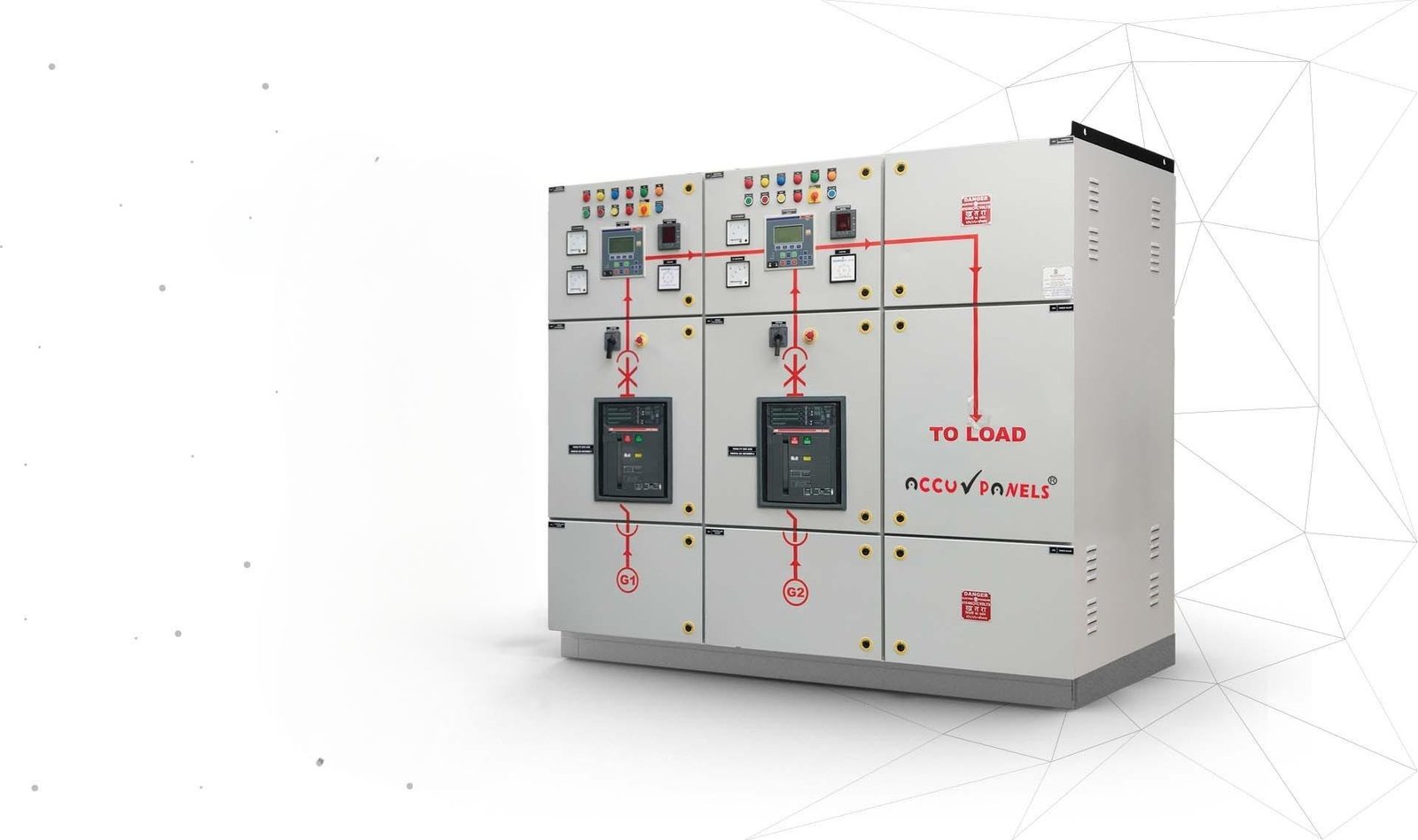SAAR INDUSTRIES

Synchronizing panel
Synchronizing Panel
A synchronizing panel, also known as a synchronization panel or synchronizing control panel, is a critical component in electrical systems, particularly in situations where multiple power sources need to be synchronized before being connected to a common electrical bus or grid. It ensures that these power sources, such as generators or utility feeds, are operating in phase with each other before they are paralleled or connected to the main electrical system.A synchronizing panel, also known as a synchronization panel or synchronizing control panel, is a critical component in electrical systems, particularly in situations where multiple power sources need to be synchronized before being connected to a common electrical bus or grid.
Synchronizing Relays: These relays compare the voltage, frequency, and phase angle of incoming power sources and issue commands to synchronize them. They ensure that the power sources are operating in phase before they are connected to the system.
Automatic Voltage Regulators (AVRs): AVRs adjust the output voltage of generators to ensure that they match the required voltage level for synchronization. They maintain stable voltage output during load changes and ensure proper synchronization.
Synchronizing Meters: These meters display voltage, frequency, and phase angle readings of incoming power sources. They provide real-time feedback to operators during the synchronization process.
Circuit Breakers: Circuit breakers are used to connect or disconnect power sources from the electrical bus or grid. They provide protection against overloads and short circuits.
Control Panel: The control panel houses the control circuitry, switches, indicators, and other components necessary for operating and monitoring the synchronizing panel.
Synchronization: The primary function of a synchronizing panel is to synchronize multiple power sources, such as generators or utility feeds, before they are connected to the electrical system. This ensures that the power sources are operating in phase and at the same frequency and voltage level.
Load Sharing: Synchronizing panels may include load-sharing features that distribute the electrical load evenly among connected generators. This ensures efficient utilization of generator capacity and prevents overload conditions.
Automatic Control: Some synchronizing panels feature automatic synchronization and load-sharing capabilities. They can automatically synchronize generators and connect them to the system based on pre-set parameters, reducing manual intervention and improving system reliability.
Monitoring and Protection: Synchronizing panels monitor the voltage, frequency, and phase angle of incoming power sources continuously. They provide alarms and trip signals in case of synchronization failures or abnormal operating conditions, protecting the electrical system from damage.
Manual Override: While automatic synchronization is common, synchronizing panels often include manual override capabilities. This allows operators to synchronize power sources manually and take control of the synchronization process if needed.
Backup Power Systems: Synchronizing panels are commonly used in backup power systems where multiple generators need to be synchronized before supplying power to critical loads. This ensures a seamless transfer of power during outages.
Industrial Facilities: In industries where uninterrupted power is crucial, synchronizing panels are used to synchronize generators or utility feeds to maintain a continuous power supply for manufacturing processes and equipment operation.
Data Centers: Data centers require reliable power to ensure uninterrupted operation of servers and networking equipment. Synchronizing panels are used to synchronize generators and utility feeds to provide backup power during mains failures.
Hospitals and Healthcare Facilities: Healthcare facilities rely on continuous power for critical medical equipment and life support systems. Synchronizing panels ensure a smooth transition between utility power and backup generators during power outages.
Telecommunication Towers: Synchronizing panels are used in telecommunication towers to synchronize multiple power sources and ensure a reliable power supply for communication equipment, even in remote locations.
Commercial Buildings: Large commercial buildings, such as office complexes and shopping malls, use synchronizing panels to synchronize generators for backup power during emergencies and to ensure continuous operation of essential services.
Oil and Gas Industry: Synchronizing panels are essential in the oil and gas industry, where power interruptions can lead to safety hazards and production losses. They synchronize generators for backup power and maintain power supply reliability in remote locations.
Mining Operations: Mining operations require reliable power for heavy machinery and equipment. Synchronizing panels ensure a stable power supply by synchronizing multiple generators and utility feeds.
SAAR INDUSTRIES - one of the best manufacturers among all others in the Pune and make all types of junction boxes, earthing cables, control panels and cable trays.
Factory 2 :- Radhika Industrial park, Gat no 676, at post - Velu, Pune 412205
Factory 3 :- Radhika Industrial park, Gat no 676, at post - Velu, Pune 412205
Support@saargroupofindustries.com Sales@saargroupofindustries.com
